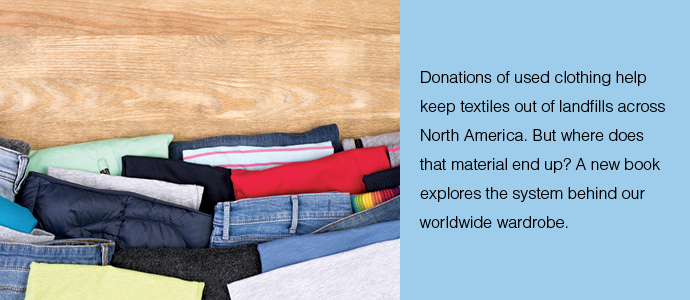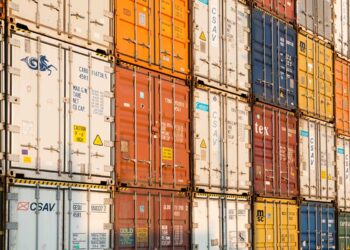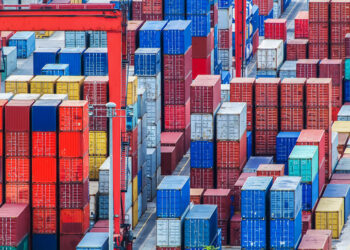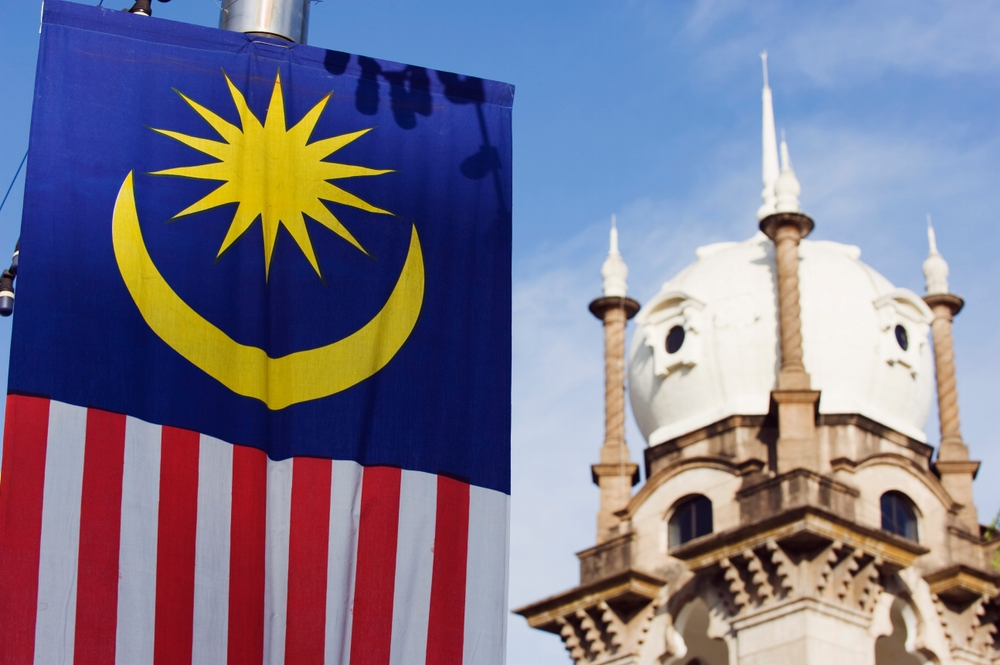This article originally appeared in the November 2019 issue of Resource Recycling. Subscribe today for access to all print content.
The passage that follows is an excerpt from “Secondhand: Travels in the New Global Garage Sale” by Adam Minter (published this month by Bloomsbury).
Used Clothing Exports occupies a series of rooms at one end of a generic single-story office building on Tomken Road in Mississauga, Ontario. It’s a few miles from Toronto and oceans away from the billions of emerging-market consumers who rely on secondhand clothes. But it’s here in Mississauga that perhaps as much as one-third of the used clothing generated in Canada and the United States is sorted, priced and shipped by so-called graders. It’s one of the world’s biggest hubs for the purchase and sale of used clothing. Yet outside the secondhand industry, the fewer than 20 companies that constitute it are largely unknown.
Inside the Used Clothing Exports office, Mohammad Faisal Moledina serves me milk tea and samosas at his desk. He’s a handsome man in his mid-40s, with well-coiffed, carefully tended hair and tired eyes. He wears a shiny gray suit. His mother-in-law is arriving from Dubai later, he tells me, and preparations have been stressful. Seated to his right, at an identical desk and chair, is his father, Abdul Majid Moledina, the princely, portly bearded man who founded the company. These days, father and son have the same title on their business cards: director.
Mohammad takes a call, so Abdul beckons for me to come around his desk to look at his computer screen. He’s scrolling through a website showing images of workers – they look South Asian – sorting through hills of used clothing. “You should go there,” he says. “Panipat.”
It’s a town in northern India that’s home to the world’s largest concentration of clothing recyclers. “Have you been?” I ask.
“We have Pakistani passports.”
“Right,” I say with a cringe. The Moledinas emigrated from Pakistan to Canada decades ago, but historic tensions between Pakistan and India make it difficult for citizens from their respective countries from visiting. Despite these awkward facts, the Moledinas are doing just fine. Every year Used Clothing Exports buys 60 million to 70 million pounds of used clothes from charities and companies in North America and sells them onward to “graders,” who sort, price and pack them for sale around the world.
Mohammad continues his phone conversation, so Abdul decides to surprise me. He reaches for a pair of jeans on a shelf and places them on a desk. The tag reads, “501 original. quality never goes out of style.” But this apparent pair of Levi’s is actually tagged Live’s.
“Do you see it?” Abdul asks.
“Yes.”
“In Pakistan, they refurbish these.”
“Refurbish?”
He picks up a leg and points to the hem. “See how it’s uneven and frayed below the stitch? That was done in a factory. They imported these used from somewhere, washed and dyed them, and then fixed the flaws.” He reaches for a men’s dress shirt in clear plastic wrap and a pair of men’s green khakis. “Same with these,” he says. “Then they export them to dollar stores.” He tells me the name and location of a store in Mississauga that sells garments like these.
“Seriously?”
His laugh is deep and confident. The joke is on me, the naive representative of the developed world’s consumers. And I feel gullible. Pakistan is one of the world’s largest importers of used clothes, home to thousands of secondhand traders and tens of millions of secondhand consumers. Surely there are sharp-eyed entrepreneurs among them who can spot the garments that can be transformed into “new” from the billions that can’t. In fact, it’s far more likely that such entrepreneurs exist in developing countries like Pakistan, where secondhand is a way of life, than in wealthy regions, where the law is likely to view “new” as “fraud.”
Mohammad finishes his phone call and announces that we can go to see a clothing grader. He ushers me out of the office and into his Mercedes-Benz. It smells of cigarettes and is cluttered with stuff that he has to clear off the passenger seat. “I hope you don’t mind, but we’re going to a small plant, maybe 50 employees.”
“What’s a big plant?”
“Three hundred employees and $20 million monthly in turnover. Two hundred thousand pounds per day.”
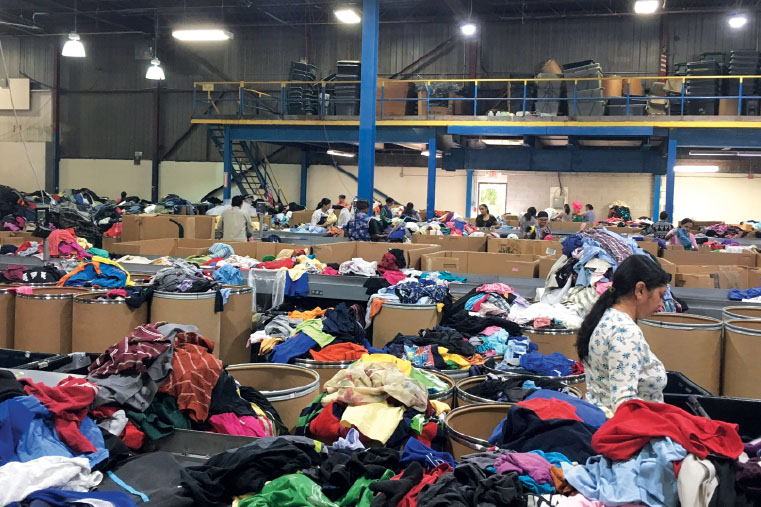
Officially, around 4 million tons of used clothes are exported around the world every year. Unofficially, the trade is much larger. In India, where the import of secondhand clothes has been banned for more than a decade, imported secondhand clothes are available everywhere, including markets visible from the seats of government in Delhi and Mumbai. In West African cities like Accra, Lomé and Cotonou, imported secondhand-clothing stores and stalls are typically more common than stores selling new clothes.
Mohammad notices his fuel gauge is low and pulls into a gas station. While fueling, he lights a cigarette and takes a phone call; I watch as he ashes into a trash can next to the pump. Then we’re on our way, and he’s pointing out where the various textile-grading houses are located in Mississauga. “Back there,” he says, gesturing at a warehouse behind a Tim Horton’s. “One of the bigger ones.”
“Why are all these clothing graders in Mississauga?” I ask.
“It’s an immigrant-friendly city.” And for decades, Canada has been an immigrant-friendly country. Toronto, as Canada’s biggest city, attracted many of those immigrants. But when Toronto became too expensive, neighboring Mississauga beckoned. Neither Mohammad nor anyone else with whom I’ve spoken agrees on who the first immigrant with secondhand-clothing experience to settle in the city was. But everyone agrees it was either a Pakistani or an Indian with a decades-old family connection to the business. At some point in the 1970s or early 1980s, that South Asian immigrant trader met an African immigrant keen to export used clothes home.
Mississauga’s long, cold winters also helped, ensuring that the area’s summer clothes are worn briefly, and lightly. As a result, secondhand summer clothes from Canada (and northern Europe) are priced at a premium in the hot countries that are the biggest consumers of secondhand clothes. That price premium gives Canadian clothing graders and traders an advantage when competing for clothes elsewhere. Combine this advantage with large numbers of immigrants looking for low-skilled jobs, and Mississauga becomes an ideal – if unlikely – location for a global recycling hub.
Mohammad lived in Pakistan and Dubai, and he says he prefers Canada. “Life is real here.” In Pakistan and Dubai, he claims, people are too worried about status. “Here, if I wear a Rolex or a nice suit, it’s because I like it.”
That brings to mind a question. “Do you wear secondhand clothes?”
“I don’t. Nothing against it, I just don’t.”
Criticisms and complications around global trends
Over the years, critics of the globalized secondhand-clothing trade have alleged that it undermines textile industries in developing regions, especially in Africa. It’s a potent claim that has intuitive power. Africa is the largest market for secondhand clothes globally, and has been for several decades. Meanwhile, its textile industries have declined precipitously since the 1980s. In the Democratic Republic of the Congo, for example, textile production dropped by 83 percent between 1990 and 1996. In Nigeria, Africa’s most populous country, a textile industry that employed as many as 200,000 in the 1970s has dwindled to almost nothing. In Kenya, home to some of the world’s largest secondhand-clothing markets, a textile industry that employed as many as 500,000 people in the 1980s now employs fewer than 50,000.
Geographers and other academics have created a small industry to prove the claim. Of these, the most prominent is Garth Frazier, a Canadian academic. In 2008 he analyzed used-clothing trade data compiled by the United Nations and concluded that used-clothing exports explain “roughly 40% of the decline in African apparel production and roughly 50% of the decline in apparel employment.” Frazier’s claim has migrated well beyond the academic journals and is now regularly cited in mainstream media, by anti-globalization activists, and, most notably, by the kind of well-meaning sustainable-clothing advocates who’d ordinarily cheer for mass use of secondhand over new products.
There’s no question that secondhand is often a replacement for new (not nearly enough, in my view). But quantifying those replacements is extremely difficult, even in developed countries where tax and trade data allow for analysis. In developing regions like sub-Saharan Africa, where governments struggle to compile reliable data and statistics, it’s almost impossible. Countries that are known to be major importers of secondhand clothing – like Benin, Togo, Ghana, Tanzania and Mozambique – have sporadic trade data of any kind. Most of the data they have is focused on the kinds of goods that attract additional overseas investment and aid (that is, new stuff). And obviously, they don’t have data on the considerable volume of secondhand clothing smuggled between African countries (especially between tiny Benin, a global secondhand smuggling hub, and Nigeria).
Simplistic explanations built on what seem like logical correlations – used must undermine new! – don’t do justice to the complex, very human reasons that individual consumers make specific choices. It’s true that Africa’s textile and new clothing industries underwent a significant decline beginning in the mid-1970s. But that period also encompassed an era in which Africa’s cotton production declined just as precipitously as its textile manufacturing, thanks to land reforms, political frictions, war, and – most recently – climate change. It also encompassed an era of economic liberalization that opened up Africa’s economies to competition from Asia (the same region that undermined the North American and European textile industries). By 2005, exports from fast-growing Asian textile and clothing manufacturers to Africa were growing even more rapidly than they were to Europe and the United States. The resulting competition devastated African manufacturers and lowered incomes across the continent.
Nonetheless, incomplete trade data alone doesn’t do justice to these phenomena. Instead, the individual seeking out what actually happened to Africa’s textile industry must go there and meet the people who live with it. Since the mid-2000s, Ghana’s labor-union leadership has blamed two related phenomena for the decline of the country’s once-thriving textile industry: pirating of Ghanaian brands and styles by low-cost Chinese firms and the large-scale evasion of Ghanaian custom duties by East Asian exporters. They have a point. For example, production of kente cloth, the colorful Ghanaian fabric once exported around Africa and the world, employed 30,000 people as recently as the 1980s. Since then, Chinese counterfeits have flooded the market and devastated producers (Ghanaian kente manufacturers employ fewer than 3,000 today). At Ghanaian markets, buyers can expect to pay far more for locally produced, and so naturally opt for low-cost Chinese imports. The situation for Ghanaian kente producers is so dire that a government-sponsored initiative to encourage people to wear traditional Ghanaian clothes on Fridays is widely derided as a jobs program for the Chinese.
If you view used clothing as an extension of Western colonialism, East Asian entrepreneurialism is a far less satisfying explanation for why Ghana’s textile industry has declined by 80 percent over the last few decades. But it’s a better one.
Of course, given a choice, most Africans – like people everywhere – would prefer new. But all consumers make a rational decision about value and what they can afford. Secondhand, in most cases, wins.
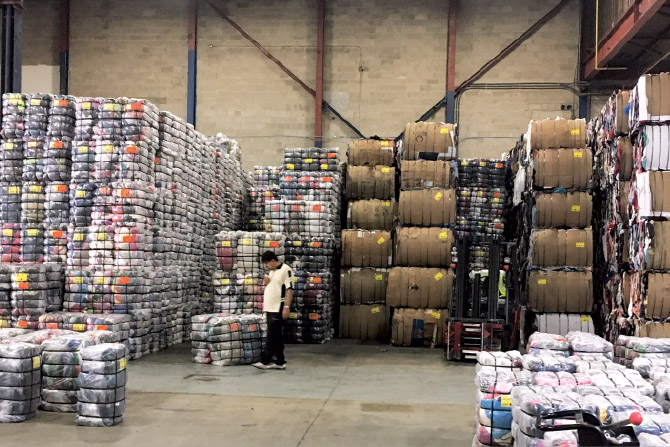
A look inside the grading process
Mohammad Faisal Moledina takes a hard right on Dusty Drive and pulls into the almost-empty parking lot of Maple Textiles’s large yellow warehouse. Next door, Mohammad notes, is another South Asian–owned clothing grader. But we’re here for Maple Textiles, and he walks to the door with the confidence of an important customer. We’re met at the door by Yusuf, a gangly member of the family that owns the company.
Inside, the offices are empty, and the largest room is dim, with just a desk, a few chairs, and two tables. We pass everything quickly, as Yusuf recounts that he’s spent two decades living in Uganda, Angola, and Congo, working in the used-clothing business. According to him, and to Mohammad, those experiences are a competitive advantage. “I know how to choose the clothes that Africans want.”
Yusuf opens a door and we walk into a three-story warehouse and an explosion of colorful textiles that dozens of workers sort and stuff into cardboard barrels and boxes. A black conveyor belt runs through the middle of the space, between the far gray cinderblock wall where hundreds of neatly packed, 55-kilogram bundles of sorted clothing are stacked almost to the ceiling. The 55-kilogram bundle is an industry standard embraced around the world, made in machines that compress loose clothes into cubes (occasionally leaving a sleeve hanging loose). Thanks to all the fabric, sound is muffled and buffeted. Voices go dead.
Maple Textiles is a lot of clothes, that’s for sure. It’s also a lot of different kinds of people: South Asians, Sikh men, two Spanish-speaking women, Africans, several women in hijabs. They eye me warily and turn away.
We walk between the barrels and boxes, toward the conveyor belt, which is slowly running clothes delivered in large, loose 500-pound bales. The clothes are pulled and graded into smaller – and finer – categories. “First we sort into boxes,” Yusuf says. “Then our more experienced employees sort into barrels.” He pulls a pinstripe Abercrombie & Fitch dress shirt from a box. “This is B-grade because of the yellow collar, and it needs to be washed. So it’ll go into a B-grade bundle and be sold for less.”
We stare into a barrel of clothes that Yusuf calls “number three.” Most are torn and feel thin and cheap. “That’s sent for rags,” he says. “Wiping rags.”
Mohammad pulls a green velvet evening dress from a box. It looks expensive and as if it has never been worn. “What about this?”
“Tricky,” Yusuf says. “The dress looks great, but it’s too heavy for Africa’s heat. B-grade too.”
It occurs to me that I’ve seen this before: the grading process is basically a more detailed version of the sorting and pricing that I witnessed in the back of the Goodwill on South Houghton in Tucson, Ariz. [editor’s note: this Goodwill site was detailed by Minter earlier in the book]. Only instead of grading for Tucson’s secondhand customers, Mississauga grades and prices for Africa and other developing markets. And Africa’s, it turns out, are more discerning.
We walk over to a stack of neat clothing bales that have been sorted and await shipment. Each bale is covered in cellophane and affixed with a yellow label that displays a bar code and a category: ladies fashion T-shirt.
“What’s that sell for?” I ask.
“Maybe $60,” Yusuf says. “And then whoever buys it will sell each of the T-shirts for 15, 20 cents. If they’re lucky, there’ll be something in there that they can sell for more and that’ll make the whole bale worth it.” For the next five minutes, Yusuf points at bales and explains the markets. A bundle of baby clothes sells for an extravagant dollar per pound because they’re in high demand but generally aren’t donated to charities. “People hand them down to others, or they’re too soiled.” A bale of hospital uniforms, mostly made up of washed scrubs, goes for 50 to 60 cents per pound. “The low end of the business is getting harder because of China,” he says. “They’re starting to export their old clothes to Africa. Hard to compete with that, and all the new clothes they send too.”
“China is sending used clothes to Africa?”
“Of course.”
I should have known. China is the world’s biggest consumer of new apparel. If the Chinese start throwing away at the same rate as Americans, the price of secondhand clothes is in trouble. The flood has already started: According to the United Nations’ imperfect data, China is the world’s fifth biggest exporter of used clothes, behind the United States, the U.K., Germany, and South Korea, and ahead of affluent countries like Canada, the Netherlands, and Sweden. Because China’s export data is often flawed, or distorted by smuggling, the numbers could be much higher. Either way, traders around the world complain that growing supplies and shrinking demand are lowering prices.
But China’s rising affluence isn’t the only shift that threatens Mississauga. Back in the car, Mohammad tells me that Canada’s increasing labor costs, partly driven by a law that raises the minimum wage, are pushing the grading businesses to Pakistan. “It’s the difference between $300 per month for a grader and $1,500 per month. If the price of the clothes was rising, it wouldn’t matter. But the price is falling.”
It occurs to me that somebody will have to pay for that shipping; and in the case of less valuable items, it won’t make sense to export them at all. “That’ll mean less reuse, won’t it?”
“Maybe,” Mohammad says slowly.
This text was excerpted from “Secondhand: Travels in the New Global Garage Sale” by Adam Minter. It was published Nov. 12 by Bloomsbury. Used with permission.






